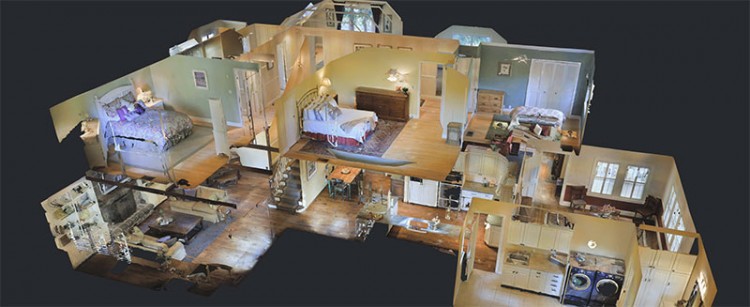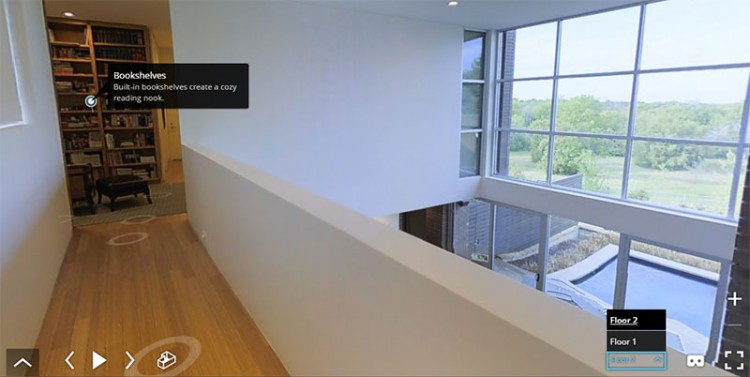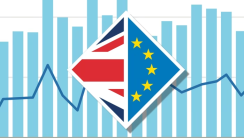Since long before the dawn of the internet, in the days of printed media property advertisements, photography and floor plans have been the mainstay of visual marketing materials used to entice house hunters into a physical viewing.
Meanwhile, with smartphones with ever-improving cameras, and even specialized floor planning apps, Estate Agents partnering with top-tier photo editing services have increasingly been able to produce these visual marketing materials themselves. Often with mixed results.
An infamous industry blog, dedicated to sub-par property photography, invokes a strong feeling that amateur photographs are not only a bit old-fashioned, but can actively deter home buyers from arranging a viewing. All because the visuals on the listing weren't a fair representation of the home in question.
Back to the present day, an increasing numbers of Agents are reaping the benefits of upgrading their property adverts with 3D Virtual Tours, moving away from using photos and floor plans only. In fact, research by Redfin shows that homes advertised online with a 3D Virtual Tour sell, on average, 10 days faster than those with photographs alone1.

What's a Virtual Tour?
These interactive spaces allow users to explore a property from top to bottom in 3D, with a full 360° field of vision, making them more akin to taking a real viewing.
They embed onto website pages just like an image - including onto listings on property portals and on social media - and can be viewed on any device with an internet connection, from desktop to mobile and VR headsets.
How do Virtual Tours Make the Selling Process Faster?
REA Group's research - which surveyed Estate Agents who recently started including Virtual Tours with their services - finds that potential buyers are 60% more likely to email an Agent when viewing a property listing which includes a virtual tour, compared to those without. 90% of Agents went on to say they've built a stronger brand, and 74% had won more instructions as a result2.
Apartments.com published data from their website showing that listings with Virtual Viewing capabilities encouraged users to interact with a property advert for three to six times longer, resulting in a 49% increase in qualified leads3.
Meanwhile "The Digital House Hunt", a study co-commissioned by Google and the National Association of Realtors, grouped Virtual Tours and traditional videos into the same category, and found that listings with these enhanced visual materials received 403% more inquiries than those without4.
All of the above means that your properties receive more enquiries when users can take a virtual viewing on your listings, meaning they typically sell faster.
Beyond this, however, they also reduce the number of viewings that are conducted and wasted before an offer is made, because they provide a far more realistic impression of the home compared to photography alone. This acts to pre-qualify potential home buyers with an online viewing before the real thing. Research by Property Week found that, on average, the number of wasted viewings conducted was 40% fewer for properties advertised with virtual tours5.

Why are They so Effective?
The above statistics may be compelling, but the reasons behind why virtual 3D marketing increases engagement with property listings are less obvious without looking into wider social trends.
The first is experiential marketing, a tactic often associated with physical retail as the High Street continues its battle with e-commerce. The general idea is that consumers on the whole are increasingly concerned with having experiences during the buying process. The comparison with real estate marketing and experiential virtual tours is plain to see.
The second reason is a push from the gradual yet constant change in the demographics of homebuyers. Millennials - the generation categorised having grown up with digital technology and the internet - could now be anywhere between 18 and 38 years of age. As more of this group continue to enter the property market, there is an increasing segment of the market whose attention is most easily caught by engaging digital content.
The push of technological advancement, combined with these demographic changes in the homebuyer market, appear to pave the way for more interactive and engaging property listings.
As a result, the competitive advantage for those who move on from the decades-old combination of photography and plans alone, looks set to increase at a compounded rate. Those who neglect to align their property marketing materials with technological and demographic advancement, however, appear in danger of failing to remain relevant in today's property market.

Sources
1 https://www.redfin.com/blog/2014/08/introducing-redfin-3d-walkthrough.html
2 Mixpanel Analytics, iOs app, last 30 days as of 19 May 2016
4 https://www.nar.realtor/sites/default/files/documents/Study-Digital-House-Hunt-2013-01_1.pdf
5 https://www.propertyweek.com/news/third-dimension/3007843.article










Author
Homesgofast com
Homesgofast.com is an international real estate portal and news source for Google news. Publishing international real estate, finance, homes and travel-related news and blogs for a targeted audience since 2002. Each news item is circulated to thousands of potential readers each day and is also available to the millions of people who sign up for Google news alerts. Find homes offered for sale and to rent direct from owners and some of the best real estate agents from over 35 countries